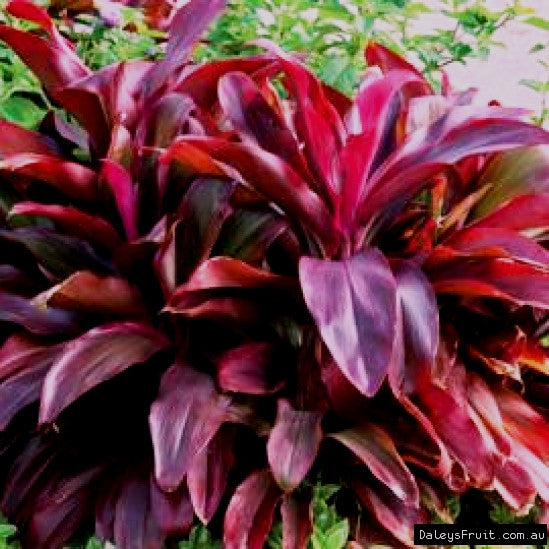Hawaiian Baby Ti
The leaves on the Ti plant can vary in width and length depending on which variety it is, although most leaves grow to about 1ft long. The leaves branch off from the main trunk in a new rosette of leaves, similar to how a dracaena plant does. The lower leaves also die off just like a dracaena, which is normal to encourage new growth.
Origin: Tropical South East Asia
Height: Grows slowly upto 3-4 ft
Light: Cordyline Terminalis houseplants prefer medium light, but survive in lower light situations. Lower light slows down the growth rate of Cordyline Terminalis plant and reduces the size of new leaves. Direct sun burns the leaves of plants
Water: Over- watering causes root-rot and is the main reason Cordyline Terminalis plant die. Water the well and don't water again until the top 50% of the soil is dry. In low light, it could take up to three weeks for the soil to dry out. Brown tips on the leaves of plants indicate over-watering or too much fluoride or salt in the water. Numerous yellow leaves means the plant needs more water.
Humidity: Basic household humidity is fine for Cordyline Terminalise plants..
Temperature: Growth may cease completely below 70 F, but will resume when warmer weather returns.
Soil: Cordyline plants grow well in a loose fast-draining soil. Any good potting mix that drains well.
Fertilizer: During growing, fertilizer with slow-release fertilizer or use a 20-20-20 liquid fertilizer at half-strength every month. Iron deficiency can result in yellowing leaves between the veins treat with an iron drench.
Pests: Cordyline plants are susceptible to thrips and mealybugs.
Pruning: If the canes of a plant become long and bare at the bottom, cut the cane back to where you would like to encourage new growth. Several new stems eventually emerge below the cut and the plant looks even more interesting.
Eliminates: Their large, dark leaves suck up ammonia, formaldehyde, toluene and xylene
Caution: Cordyline plants are not considered poisonous to humans, but are extremely poisonous to dogs and cats with a #2 toxicity level.



















